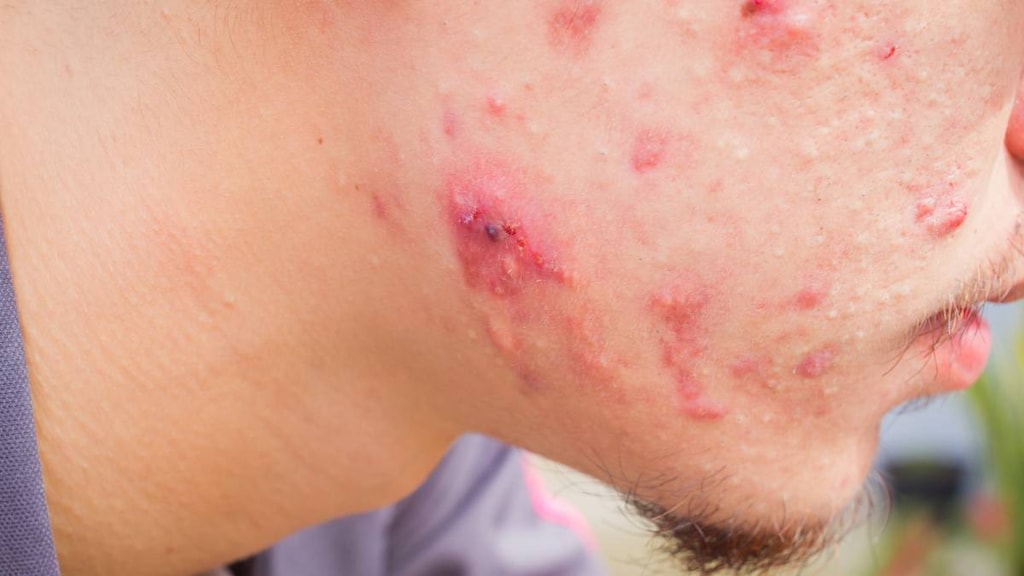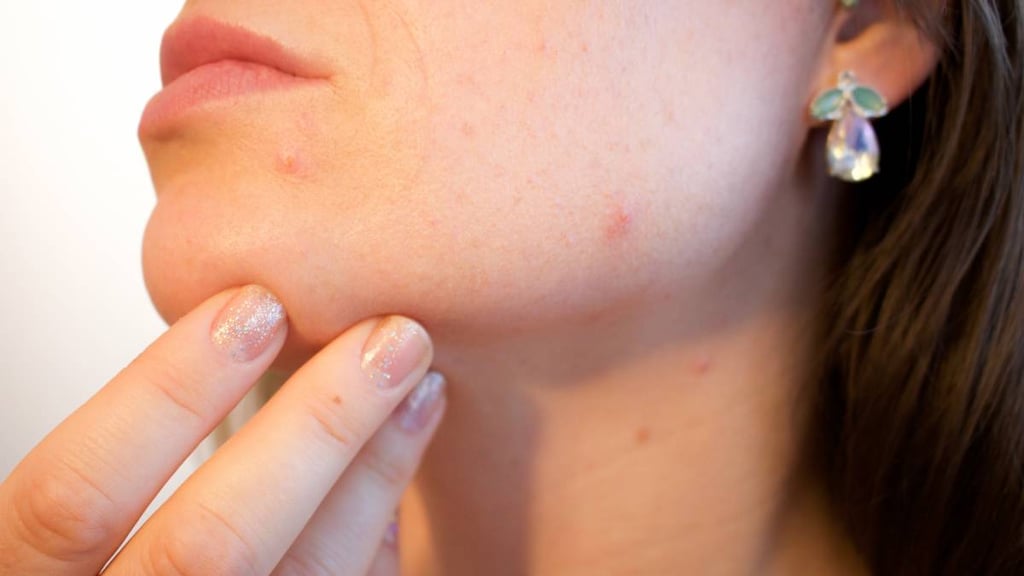Dosage Forms
Excipient information presented when available (limited, particularly for generics); consult specific product labeling. [DSC] = Discontinued product
Cream, Vaginal, as phosphate [strength expressed as base]:
Cleocin: 2% (40 g) [contains benzyl alcohol]
Clindesse: 2% (5 g) [contains disodium edta, methylparaben, propylparaben]
Generic: 2% (40 g)
Foam, External, as phosphate [strength expressed as base]:
Evoclin: 1% (50 g, 100 g) [contains alcohol, usp, cetyl alcohol, propylene glycol]
Evoclin: 1% (50 g [DSC], 100 g [DSC]) [contains cetyl alcohol, propylene glycol]
Generic: 1% (50 g, 100 g)
Gel, External, as phosphate [strength expressed as base]:
Cleocin-T: 1% (30 g, 60 g) [contains methylparaben, propylene glycol]
Clindagel: 1% (75 mL) [contains methylparaben, polyethylene glycol, propylene glycol]
Generic: 1% (30 g, 60 g, 75 mL)
Kit, External, as phosphate [strength expressed as base]:
Clindacin ETZ: 1% [contains cetyl alcohol, isopropyl alcohol, propylene glycol]
Clindacin Pac: 1% [contains cetyl alcohol, isopropyl alcohol, propylene glycol]
Lotion, External, as phosphate [strength expressed as base]:
Cleocin-T: 1% (60 mL) [contains cetostearyl alcohol, methylparaben]
Generic: 1% (60 mL)
Solution, External, as phosphate [strength expressed as base]:
Cleocin-T: 1% (30 mL [DSC], 60 mL [DSC]) [contains isopropyl alcohol, propylene glycol]
Generic: 1% (30 mL, 60 mL)
Suppository, Vaginal, as phosphate [strength expressed as base]:
Cleocin: 100 mg (3 ea)
Swab, External, as phosphate [strength expressed as base]:
Cleocin-T: 1% (60 ea) [contains isopropyl alcohol, propylene glycol]
Clindacin ETZ: 1% (60 ea) [contains isopropyl alcohol, propylene glycol]
Clindacin-P: 1% (69 ea) [contains isopropyl alcohol, propylene glycol]
Generic: 1% (60 ea)
Pharmacology
Mechanism of Action
Reversibly binds to 50S ribosomal subunits preventing peptide bond formation thus inhibiting bacterial protein synthesis; bacteriostatic or bactericidal depending on drug concentration, infection site, and organism
Pharmacokinetics/Pharmacodynamics
Absorption
Topical solution or foam, phosphate: Minimal; Vaginal cream, phosphate: ~5%; Vaginal suppository, phosphate: ~30%
Metabolism
Hepatic; forms metabolites (variable activity); Clindamycin phosphate is converted to clindamycin HCl (active)
Excretion
Urine (<0.2% with topical foam and solution)
Time to Peak
Vaginal cream: ~10 to 14 hours (range: 4 to 24 hours); Vaginal suppository: ~5 hours (range: 1 to 10 hours)
Half-Life Elimination
Vaginal cream: 1.5 to 2.6 hours following repeated dosing; Vaginal suppository: 11 hours (range: 4 to 35 hours, limited by absorption rate)
Use: Labeled Indications
Acne vulgaris: Treatment of acne vulgaris (topical gel, topical lotion, topical solution)
Bacterial vaginosis: Treatment of bacterial vaginosis (vaginal cream, vaginal suppository)
Use: Off Label
Hidradenitis suppurativac
Data from a limited number of patients studied suggest that topical clindamycin may be beneficial for the treatment of hidradenitis suppurativa Clemmensen 1983. Additional data may be necessary to further define the role of topical clindamycin in this condition.
Rosaceac
Data from a small double-blind study in patients with rosacea and a major papulopustular component suggest that topical clindamycin may be effective for treatment of rosacea
Contraindications
Hypersensitivity to clindamycin, lincomycin, or any component of the formulation; history of antibiotic-associated colitis, regional enteritis, ulcerative colitis.
Dosage and Administration
Dosing: Adult
Acne: Topical:
Gel (Cleocin T, ClindaMax), pledget, lotion, solution: Apply a thin film twice daily
Gel (Clindagel), foam (Evoclin): Apply once daily
Bacterial vaginosis: Intravaginal:
Suppositories: Insert one suppository (100 mg clindamycin) daily into vagina at bedtime for 3 days
Cream:
Cleocin: One full applicator inserted intravaginally once daily before bedtime for 3 or 7 consecutive days in nonpregnant patients or for 7 consecutive days in pregnant patients
Clindesse: One full applicator inserted intravaginally as a single dose at anytime during the day in nonpregnant patients
Alternate dosing: Pregnant or non-pregnant patients: Intravaginal:
Cream (preferred): One full applicator (5 g) at bedtime for 7 days (CDC [Workowski 2015])
Suppository (alternative therapy): One suppository (100 mg) daily at bedtime for 3 days (CDC [Workowski 2015]
Hidradenitis suppurativa (off-label use): Topical: Solution: Apply to affected area twice daily (Jemec 2012)
Rosacea (off-label use): Topical: Lotion: Apply twice daily to the face (Wilkin 1993)
Dosing: Geriatric
Refer to adult dosing.
Dosing: Pediatric
Acne vulgaris: Note: Due to emerging resistance patterns, should not typically be used as monotherapy for the management of acne vulgaris (Eichenfield 2013; AAD [Zaenglein 2016])
Children ≥7 years and Adolescents: Limited data available in <12 years of age (Eichenfield 2013): Topical:
Gel (Clindagel), Foam (Evoclin): Apply to affected area once daily
Gel (Cleocin T), pledget, lotion, solution: Apply a thin film twice daily
Bacterial vaginosis: Limited data available: Adolescents: Intravaginal:
Cream 2%: Limited data available: One full applicator (5 g) inserted intravaginally at bedtime for 7 days (CDC [Workowski 2015]; Red Book [AAP 2015])
Suppository: Insert one ovule (100 mg clindamycin) intravaginally once daily at bedtime for 3 days
Administration
Intravaginal:
Cream: Insertion with the applicator should be as far as possible into the vagina without causing discomfort.
Suppository: Remove from packaging prior to use; if applicator is used for insertion, wash after each use.
Topical:
Foam: Dispense directly into cap or onto a cool surface; do not dispense directly into hands or face (foam will melt on contact with warm skin). Wash skin with mild soap and allow to fully dry. Apply in small amounts to face using fingertips and gently massage into affected areas until foam disappears. Avoid contact with eyes, mouth, lips, mucous membranes, or broken skin.
Gel: Avoid contact with eyes.
Lotion: Shake well immediately before using.
Solution or pledget: Avoid contact with eyes, mouth or other mucous membranes; solution/pledget contains an alcohol base and if inadvertent contact with mucous membranes occurs, rinse with liberal amounts of water. Remove pledget from foil immediately before use; discard after single use. May use more than one pledget for each application to cover area.
Storage
Cream: Store at room temperature. Protect from freezing.
Foam: Store at room temperature of 20°C to 25°C (68°F to 77°F). Avoid fire, flame, or smoking during or immediately following application.
Gel: Store at room temperature.
Clindagel: Do not store in direct sunlight.
Lotion: Store at room temperature of 20°C to 25°C (68°F to 77°F). Protect from freezing.
Suppository: Store at room temperature of 25°C (77°F); excursions are permitted to 15°C to 30°C (59°F to 86°F). Avoid heat >30°C (86°F) and high humidity.
Pledget: Store at room temperature.
Topical solution: Store at room temperature of 20°C to 25°C (68°F to 77°F). Protect from freezing.
Drug Interactions
Erythromycin (Systemic): May diminish the therapeutic effect of Clindamycin (Topical). Avoid combination
Erythromycin (Topical): May diminish the therapeutic effect of Clindamycin (Topical). Avoid combination
Neuromuscular-Blocking Agents: Clindamycin (Topical) may enhance the neuromuscular-blocking effect of Neuromuscular-Blocking Agents. Monitor therapy
Adverse Reactions
Topical: >10%: Dermatologic: Xeroderma (18% to 23%; gel, lotion, solution), oily skin (gel, lotion: 10% to 18%; solution: 1%), erythema (7% to 16%; gel, lotion, solution), burning sensation of skin (10% to 11%; gel, lotion, solution), exfoliation of skin (7% to 11%; lotion, solution), pruritus (7% to 11%; gel, lotion, solution)
Vaginal:
>10%: Genitourinary: Vaginal moniliasis (≤13%)
1% to 10%:
Dermatologic: Pruritus (≤1% nonapplication site; <1% application site)
Genitourinary: Vulvovaginal disease (3% to 9%), vulvovaginitis (≤7%), vaginal pain (2%), trichomonal vaginitis (≤1%)
Infection: Fungal infection (≤1%)
<1%, postmarketing, and/or case reports (all routes): Abdominal cramps, abdominal pain, application site pain, bacterial infection, bloody diarrhea, colitis, constipation, contact dermatitis, diarrhea (hemorrhagic or severe), dizziness, dysgeusia, dyspepsia, dysuria, edema, endometriosis, epistaxis, erythema, eye pain, fever, flank pain, flatulence, folliculitis, folliculitis (gram-negative infection), gastrointestinal disease, gastrointestinal distress, halitosis, headache, hypersensitivity reaction, hyperthyroidism, maculopapular rash, menstrual disease, nausea, pain, pseudomembranous colitis, pyelonephritis, severe colitis, skin rash, upper respiratory infection, urinary tract infection, urticaria, uterine hemorrhage, vaginal discharge, vertigo, vomiting, vulvovaginal pruritus
Warnings/Precautions
Concerns related to adverse effects:
- Colitis: Use may result in fungal or bacterial superinfection, including C. difficile-associated diarrhea (CDAD); CDAD has been observed >2 months postantibiotic treatment. Discontinue drug if significant diarrhea, abdominal cramps, or passage of blood and mucus occurs.
Special populations:
- Atopic patients: Use with caution in atopic patients.
Dosage form specific issues:
- Benzyl alcohol and derivatives: Some dosage forms may contain benzyl alcohol; large amounts of benzyl alcohol (≥99 mg/kg/day) have been associated with a potentially fatal toxicity (“gasping syndrome”) in neonates; the “gasping syndrome” consists of metabolic acidosis, respiratory distress, gasping respirations, CNS dysfunction (including convulsions, intracranial hemorrhage), hypotension and cardiovascular collapse (AAP ["Inactive" 1997]; CDC 1982); some data suggests that benzoate displaces bilirubin from protein binding sites (Ahlfors 2001); avoid or use dosage forms containing benzyl alcohol with caution in neonates. See manufacturer’s labeling.
- Topical foam: Topical foam may cause irritation especially when used with abrasive, desquamating or peeling agents; avoid contact with eyes, mouth, lips, mucous membranes, or broken skin.
- Topical pledget or solution: Topical pledget and topical solution contain an alcohol base and may cause eye irritation or burning. Rinse with cool tap water if product comes in contact with mucous membranes, abraded skin, or eyes. Use caution when applying near mouth (unpleasant taste).
- Vaginal products: May weaken condoms, or contraceptive diaphragms; barrier contraceptives are not recommended concurrently or for 3-5 days (depending on the product) following treatment. Vaginal cream contains ingredients that may cause eye burning and irritation; rinse with cool tap water if product comes in contact with the eyes.
Other warnings/precautions:
- Appropriate use: Acne: American Academy of Dermatology (AAD) acne guidelines recommend clindamycin (topical) be used in conjunction with other therapies (not as monotherapy) due to the risk of bacterial resistance. If given for mild acne, clindamycin (topical) should be used in combination with benzoyl peroxide. If given for moderate to severe acne, it should be used in combination with a topical retinoid or systemic antibiotic agent (AAD [Zaenglein 2016]).
Pregnancy
Pregnancy Considerations
Clindamycin crosses the placenta following oral and parenteral dosing (Philipson 1973; Weinstein 1976). The amount of clindamycin available systemically is less following topical and vaginal application than with IV or oral administration.
Various clindamycin vaginal products are available for the treatment of bacterial vaginosis. Recommendations for use in pregnant woman vary by product labeling. Current guidelines note that the same oral or vaginal regimens used in nonpregnant women may be used during pregnancy, including oral or vaginal clindamycin (CDC [Workowski 2015]).
If treatment for acne is needed during pregnancy, topical clindamycin may be considered if an antibiotic is needed. To decrease systemic exposure, pregnant women should avoid application to inflamed skin for long periods of time, or to large body surface areas (Kong 2013).
Patient Education
What is this drug used for?
All skin products:
- It is used to treat pimples (acne).
- It may be given to you for other reasons. Talk with the doctor.
All vaginal products:
- It is used to treat vaginal infections.
Frequently reported side effects of this drug
- Burning
- Itching
- Dry skin
- Redness
- Oily skin
- Back pain
- Constipation
- Headache
Other side effects of this drug: Talk with your doctor right away if you have any of these signs of:
- Clostridioides (formerly Clostridium) difficile-associated diarrhea like abdominal pain or cramps, severe diarrhea or watery stools, or bloody stools.
- Urinary tract infection like blood in the urine, burning or painful urination, passing a lot of urine, fever, lower abdominal pain, or pelvic pain.
- Severe skin irritation
- Vaginal pain, itching, and discharge
- Severe vaginal irritation
- Signs of a significant reaction like wheezing; chest tightness; fever; itching; bad cough; blue skin color; seizures; or swelling of face, lips, tongue, or throat.
Note: This is not a comprehensive list of all side effects. Talk to your doctor if you have questions.
Consumer Information Use and Disclaimer: This information should not be used to decide whether or not to take this medicine or any other medicine. Only the healthcare provider has the knowledge and training to decide which medicines are right for a specific patient. This information does not endorse any medicine as safe, effective, or approved for treating any patient or health condition. This is only a brief summary of general information about this medicine. It does NOT include all information about the possible uses, directions, warnings, precautions, interactions, adverse effects, or risks that may apply to this medicine. This information is not specific medical advice and does not replace information you receive from the healthcare provider. You must talk with the healthcare provider for complete information about the risks and benefits of using this medicine.




